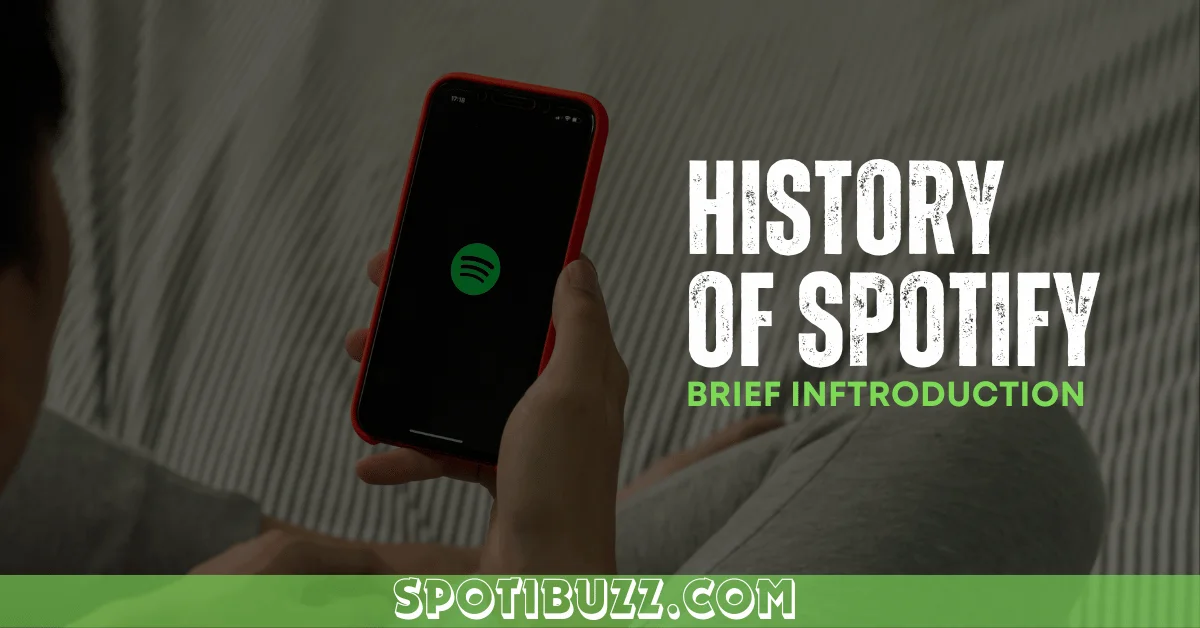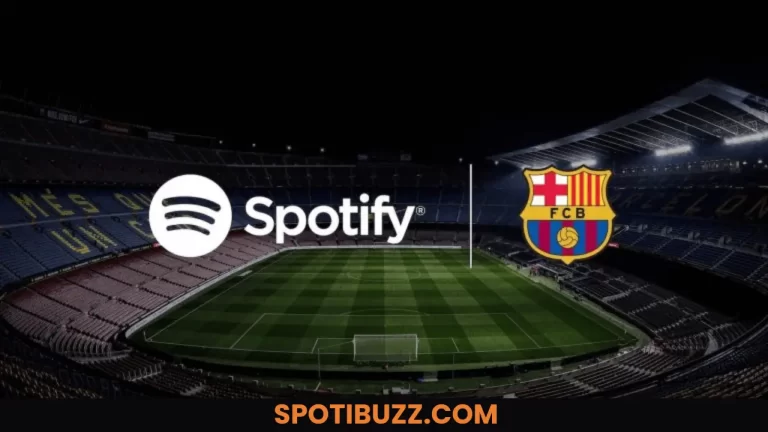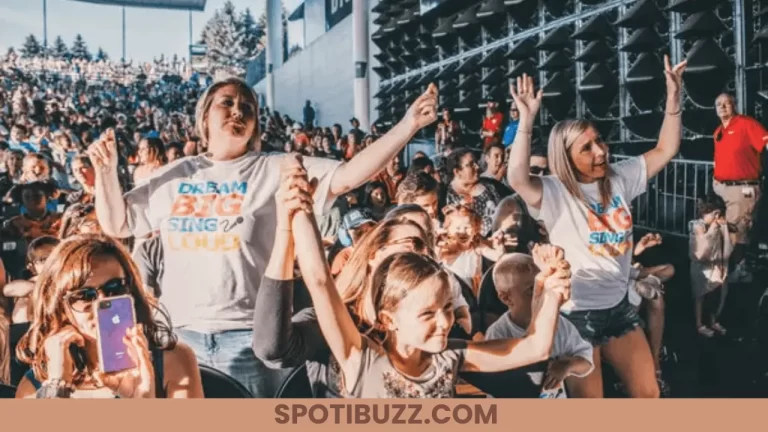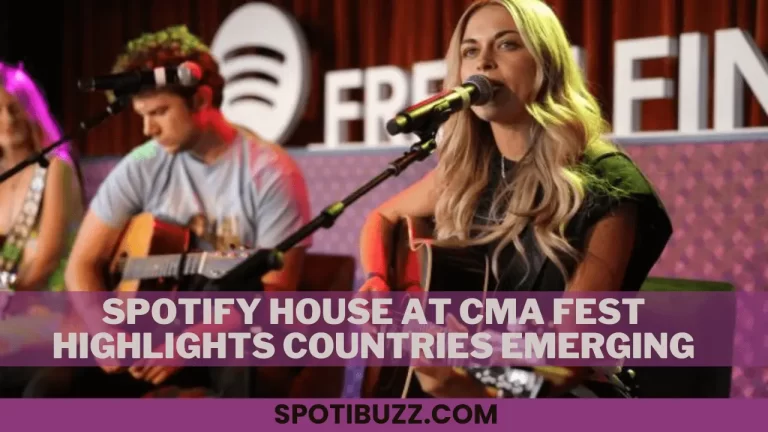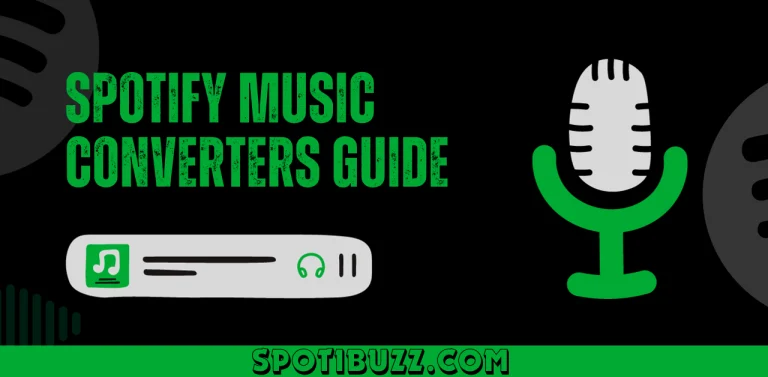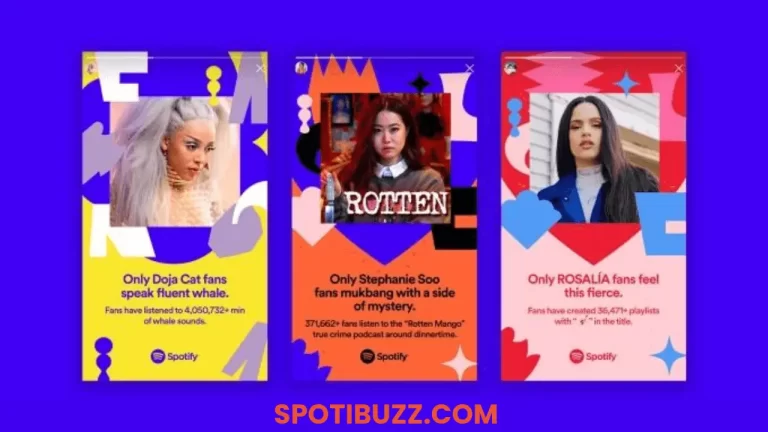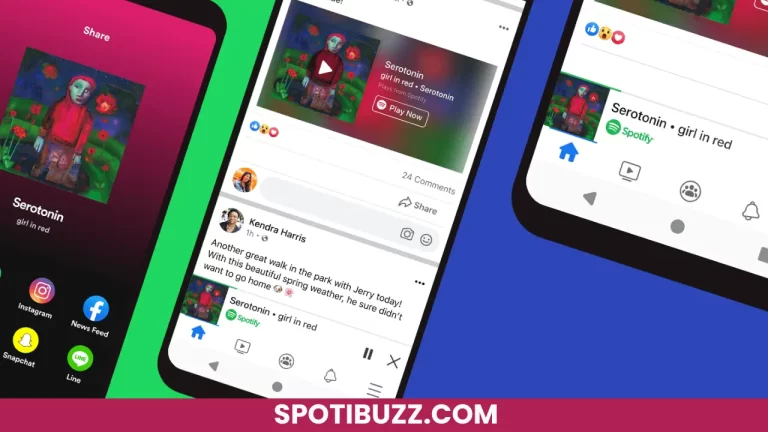History and a brief Introduction of Spotify
We are all familiar with “Spotify”, the largest audio streaming and music service provider serving a platter of podcasts, videos, and music to its customers with more than 210 Million Premium Users, I often wonder how an 18 Years old kid came up with the idea that later on revolutionised the Music Industry and became the deciding factor in who makes it in the Industry.
To fully understand Spotify’s Success journey we have to get familiar with the mind behind the Company, “Danial EK” the Web Developer & entrepreneur from Sweden.
Spotify’s Startup Story – How it Started?
The startup story of Spotify resembles other similar startups like Geometry Dash APK where they started from nothing and now the Geometry Dash has become one of the most played games in Rhythm based gaming. The unique combination of crossing obstacles and the heart pounding beats enhances the overall gaming experience.
Similar to the inspiring story of Geometry Dash, Spotify’s Story started in 1999 when an 18 years old boy started bringing home some Expensive TVs which he could not afford. His parents started to think that their son had turned to a life of crime but the reality was something really surprising.
In 1994 when Danial was just 13 years old he understood the growing potential of Websites and started a business of making websites for his clients for 100$ per website, as time passed his expertise and demand for websites grew and he started charging 5000$ per website, at the age of 18 he was already managing the team of 25 employees.
Back then music and songs were not easily available, those were the days when CDs and Record Labels sold their Albums for high prices, as time progressed there was a sudden growth of illegal music downloading.
Many platforms like Napster were illegally providing Music for free, and Record companies were losing Billions in sales because Fans were getting Music freely, the music industry had fallen from 25.2 billion dollars in 1999 to 19.4 billion dollars in 2006, so they were desperate to shut down Napster so they sued Napster for distributing Music freely.
After Napster got shut down in 2001, sites like Kazaar, Pirate Bay, E Donkey, and others took their place, and even after they got rid of Napster, piracy was still there.
This was also shared by Danial in 2010 during an interview with The Telegraph, he said “You can never legislate away from piracy. Laws can certainly help but it doesn’t root out the problem. The only solution was to build something better than piracy and simultaneously be productive for the music industry.”
Danial EK- The Mind Behind Spotify
Before starting Spotify Danial already had enough Exposure to run a successful business as he managed an E-Commerce Company by the name of Tradera. After that, he served as the CEO of Stardoll which was a fashion Community and a browser-based game.
The Entrepreneurial spirit inside of him didn’t let him settle and he later on started Advertigo, an advertising company that was sold in 2006 to the co-founder of Spotify Martin Lorentzon, After that Danial worked as CEO at Utorrent for some time and then started Spotify with his Partner.
Martin Lorentzon – Cofounder and support of Spotify
Martin Lorentzon started his career with an internship in Telia, then he joined AltaVista (one of the oldest search engines which was later on sold to Yahoo) in San Francisco. He co-founded Netstrategy in 1999, a leading marketplace in Europe that was later known as Tradedouobler. They bought Danial’s marketing Company Advertigo in 2006 and that’s where they both met each other.
The motivation behind Spotify
After selling his company at the age of 23, Danial was living the life of dreams, becoming a Millionaire, buying a red Ferrari, and being consumed by late-night parties Danial started having a quarter-life crisis.
Danial told The New York Times Magazine in one of his interviews that “When you are a Computer Geek, all you want is to be the guy with all the girls, but I realised after a while that it isn’t me”
Danial with his team of designers and engineers accompanied by Ludvig Strigeus, the developer and owner of uTorent wanted to launch Spotify as soon as possible, and within months they completed Spotify.
The story behind the name of Spotify
In 2006, Danial and Martin were brainstorming new business ideas and they came up with an idea to solve the piracy problem, who knew that it would change the whole scene of the Music Industry?
The Story of the selection of Spotify’s name is unique as Danial and Martin were shouting different businesses names from their rooms and Danial misheard something as Spotify, as soon he heard it he Googled it and found out that nothing matches the search result, and both of them liked how it sounded and they Registered the name instantly.
Inspection and Mission: “Bringing Music to Everyone”
The basic concept behind the Platform was “Music for Everyone” and they claimed that their mission is to unlock the potential of human creativity by giving equal opportunity to all artists to show off their art and to provide its users easy access to that art.
Launching Difficulties
The product of their dream was ready in 2006 but the licensing contracts with Record Labels and Albums took them two more years to finally launch Spotify on October 7th, 2008.
Turning the music industry upside down was not that easy, although Record labels were losing Billions due to piracy still it was not easy to get licensing from European Record labels, Danial said he sometimes had to sleep outside of their offices and he had long argumentative debates with them to convince them that they had nothing to lose in this. Finally, he successfully convinced them and they got licensing rights.
Early Years: Making an Impact
In 2008 Spotify launched as a music streaming app for computers, it was only available in some European countries like France, Finland, Sweden, Norway, and some more.
Initially, Spotify limited free signups to invite-only, otherwise you have to pay for the premium package which was around £10.
Signing up for free for the general public or you can say for non-invited people was not available in the UK until 2009, they had a free signup option with ads, and if you want an add free experience you have to pay for a premium subscription.
Other than making free signups available for the general public Spotify launched its mobile version for smartphones and was also available on the Apple app store in 2009 and the platform launched its service on Android Play Store in 2012.
Launching in the US and Expanding its reach
Spotify was launched in the US in 2011 but many people started talking about it way before that, one of them was Facebook CEO Mark Zuckerberg, who tried it on the recommendation of Sean Parker, who was one of the faces of Napster. Mark posted on his Facebook wall saying “Spotify is so good”.
Sean also mailed Danial that ever since Napster he always dreamt of making something like Spotify.
By 2010 everyone was waiting for Spotify to launch in the US, Danial made an appearance at SXSW, and people were expecting him to talk about the US release but he didn’t provide a confirmed date.
In 2010 Spotify made a partnership with Shazam so every time a person uses Shazam to identify a tone, it gives results from Spotify, it was the initiation of the vision of Danial to integrate Spotify into everything from Starbucks to Facebook.
2011 was the most important year for Spotify as they launched in the US and also announced their 1 Million Premium users, two months after the US launch they got 2 Million paid users, and they gained the same amount of paid users in 2 months which they got in two and a half years of their launch.
Spotify received a significant $100 million investment, which played a crucial role in its expansion into the United States. To navigate the music industry landscape, Spotify enlisted the help of Sean Parker, the co-founder of the notorious file-sharing site Napster. Parker’s expertise was instrumental in establishing important partnerships with major record labels, strengthening Spotify’s position in the market.
In the same year, Facebook launched Open Graph and Spotify was one of the partners along with some other rivals, now every time a person uses Spotify, Facebook will automatically publish the user’s favourite album, and songs they are playing on their Facebook timeline.
This was the first time Spotify users got irritated by their integration as many of them hated this idea, later on, Ek added a private listening mode that will privatise your listening.
By November 2011 Spotify gained 7 Million Subscribers and about 2.5 Million Paying members. They also announced their platform for developers to build new things on top of Spotify like buying tickets, reviews etc.
Spotify was getting a great response after its launch in the US, President Obama also released a 41 songs playlist in that year’s presidential campaign.
They partnered with Coca-Cola in 2012 to increase its revenue and also to show its might to its rivals, it was also to one-up Coca-Cola’s Music game against its Rivals so it was for the mutual benefit of both companies.
In the same year Metallica, known for suing Napster, reconciled with Spotify and allowed their music to be streamed on the platform. Spotify reaches 5 million paid subscribers and 1 million in the US.
Spotify launched its first TV ad campaign in 2013 and denied rumours of launching a video service at that time. Now a change in the approach of Spotify was observed when they started acquiring other companies. Spotify acquired Tunigo, a music discovery and playlist service, which later on played a key role in Spotify’s editorial playlist strategy.
Spotify’s Impact: Recognitions and Controversies
Everything was going as Danial planned but things started to get ugly when Thom Yorke of Radiohead removed the band’s music from Spotify, sparking a debate on royalty payments and music’s value.
This left an everlasting controversy with Spotify’s name, after that in August 2013 Daniel Ek defended Spotify’s financials, stating that they have proven their business model and clarifying the difference between streaming revenue and downloads.
Spotify continued acquiring other services and they bought The Echo Nest, a startup specialising in machine learning for music recommendations, enhancing Spotify’s algorithmic playlists.
In 2014 Spotify had to face another hit when Taylor Swift removed her music from Spotify, criticising the platform and advocating for fair payment. Swift and her label eventually reconciled with Spotify after 3 years.
This trend of Musicians going against Spotify continued when in March 2015 Jay Z launched Tidal, a competitor to Spotify, targeting its freemium model and sparking controversy.
Rebranding the approach of Spotify
In 2015, Spotify underwent a significant update and rebranding, introducing music videos and clips to its service. This expansion aimed to enhance the user experience by providing a broader range of multimedia content. By that time, Spotify had amassed an extensive library of songs, with over 25 billion hours of music available to its users.
All of these controversies weren’t enough to stop Spotify to reach its Prime and Spotify’s decision of Acquiring other companies proved to be fruitful when in May 2015 Spotify expanded into podcasts, video streaming, and news radio making deals with famous brands like Comedy Central, Vice, BBC, and ESPN. It also introduced mood-and time-based playlists.
Spotify was making it difficult for Competitors to keep up but Apple was ready for the war, in June 2015, Apple introduced Apple Music and secured exclusivity deals with some artists like Drake, Taylor Swift, and others, Apple changed its strategy to compete with Spotify, now Instead of charging per download as they did in iTunes they opted for a monthly subscription like Spotify.
Spotify raises additional funding and reveals user milestones of achieving 20 million subscribers out of 75 million users by 2015 and proving a point that although freemium is controversial, it works.
President Obama’s jokes about wanting a job at Spotify are evident enough of the success of Spotify at that time, In response, Spotify creates a fictional job listing for a “President of Playlists.
Spotify Made a deal with Universal Music in 2017 and in the same year, Taylor Swift returned to Spotify after her previous fallout with the platform in 2014. Spotify continued its Growth when it Partnered with Tencent to position itself in the Chinese Market.
Empowering Artists: Introducing “Spotify for Artists”
As part of its offerings, Spotify introduced “Spotify for Artists,” a dedicated platform designed to empower artists and their teams. This platform provides valuable insights into audience statistics and equips artists with various tools to promote their music and effectively manage their profiles on Spotify.
By providing these resources, Spotify aims to support artists in reaching their fans and maximising their presence on the platform. From promoting their shows to selling artist-branded merchandise.
Preparing for IPO: Grey Market Trading and Valuation
In February 2018, Spotify decided to file for a Direct listing IPO, Before its initial public offering (IPO), Spotify shares were reportedly trading on the grey market for as high as $150, resulting in an unofficial valuation of $26.5 billion. Grey market trading takes place outside official channels and often precedes an IPO.
Making Partnerships and Solidifying their Dominance
Since then Spotify has been making partnerships with other brands like Tik Tok, Instagram, Snapchat, and others and is one of the major music streaming brands having 515 million active users out of which 210 million are using its premium services.
In recent years, Spotify has made several acquisitions in the content and technology industry, with a strong focus on expanding its podcast offerings. This strategy has proven to be highly successful for the company. From 2018 to 2021, Spotify’s podcast count grew from 185,000 to an impressive 3.2 million. In October 2021, Spotify proudly announced that it had surpassed Apple Podcasts in terms of US listenership.
Spotify’s CEO, Daniel Ek, has also demonstrated his investment in innovative ventures. He invested approximately $1.2 billion of his own money into Helsing, a European defence AI startup, and other ambitious projects known as moonshots. These investments showcase Ek’s commitment to exploring and supporting groundbreaking initiatives outside of Spotify’s core business.
Conclusion: Spotify’s Impact and Future in the Music Industry
Spotify’s early concept revolved around market segmentation, where they found a middle ground between the popularity of illegal services like Napster and the individual song sales model of Apple’s iTunes. They aimed to provide a legal and affordable music streaming service, differentiating themselves from both extremes in the music industry.
As of November 2021, Spotify held a significant market share of over 32% in the global streaming market, solidifying its position as a leading player in the industry. Additionally, in early May 2020, Spotify’s market capitalization was valued at $26.9 billion, reflecting the company’s substantial market value during that period.
Before Spotify it was very difficult for an artist to distribute their music to Audiences, firstly they had to go through Record Labels, and on top of that there was the issue of Piracy, Spotify provided the solution to both record labels and also to independent artists as they provided a solution to piracy and also a platform to the new artists.
In total the story of Spotify is insane, a couple of Successful guys had an idea and they just decided to run with it, whether you love it or hate it Spotify has flipped the Music Industry on its head and is now an undeniable factor for any Music’s Success.
